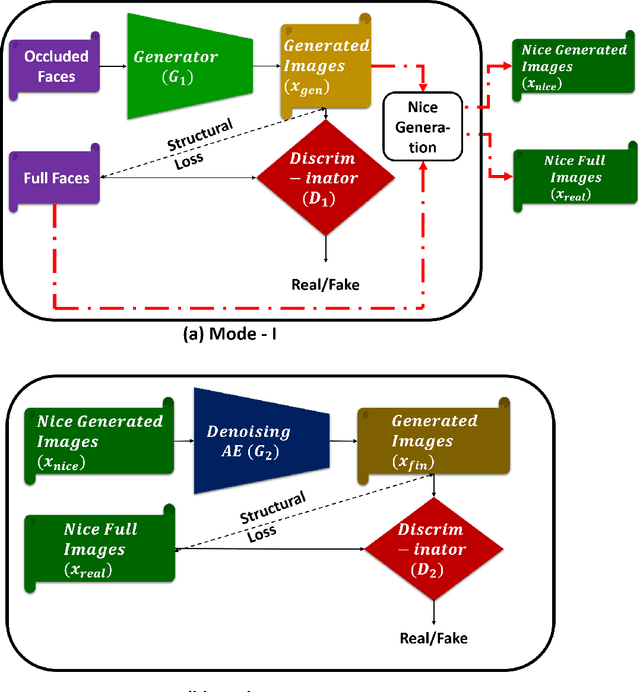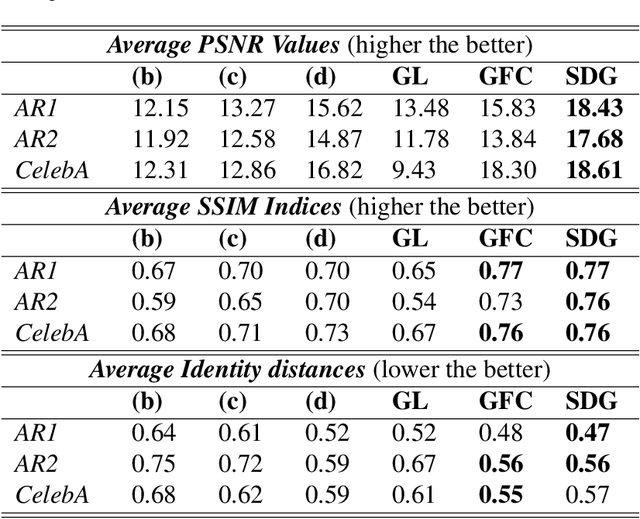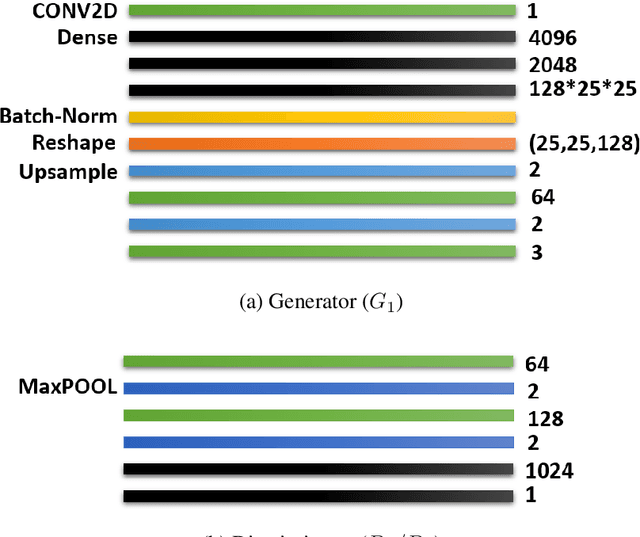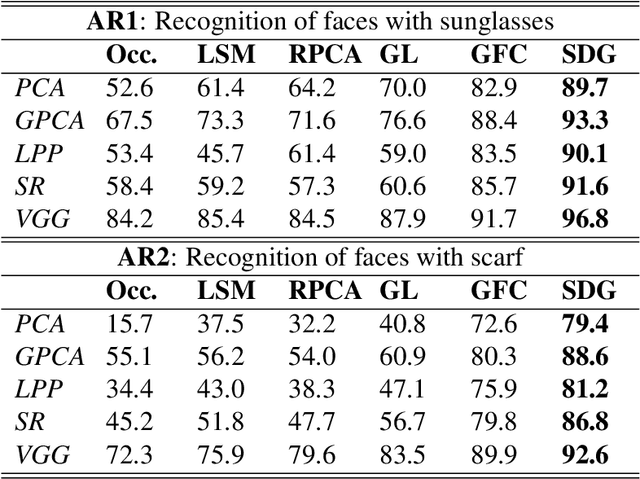SD-GAN: Structural and Denoising GAN reveals facial parts under occlusion
Paper and Code
Feb 19, 2020



Certain facial parts are salient (unique) in appearance, which substantially contribute to the holistic recognition of a subject. Occlusion of these salient parts deteriorates the performance of face recognition algorithms. In this paper, we propose a generative model to reconstruct the missing parts of the face which are under occlusion. The proposed generative model (SD-GAN) reconstructs a face preserving the illumination variation and identity of the face. A novel adversarial training algorithm has been designed for a bimodal mutually exclusive Generative Adversarial Network (GAN) model, for faster convergence. A novel adversarial "structural" loss function is also proposed, comprising of two components: a holistic and a local loss, characterized by SSIM and patch-wise MSE. Ablation studies on real and synthetically occluded face datasets reveal that our proposed technique outperforms the competing methods by a considerable margin, even for boosting the performance of Face Recognition.
 Add to Chrome
Add to Chrome Add to Firefox
Add to Firefox Add to Edge
Add to Edge